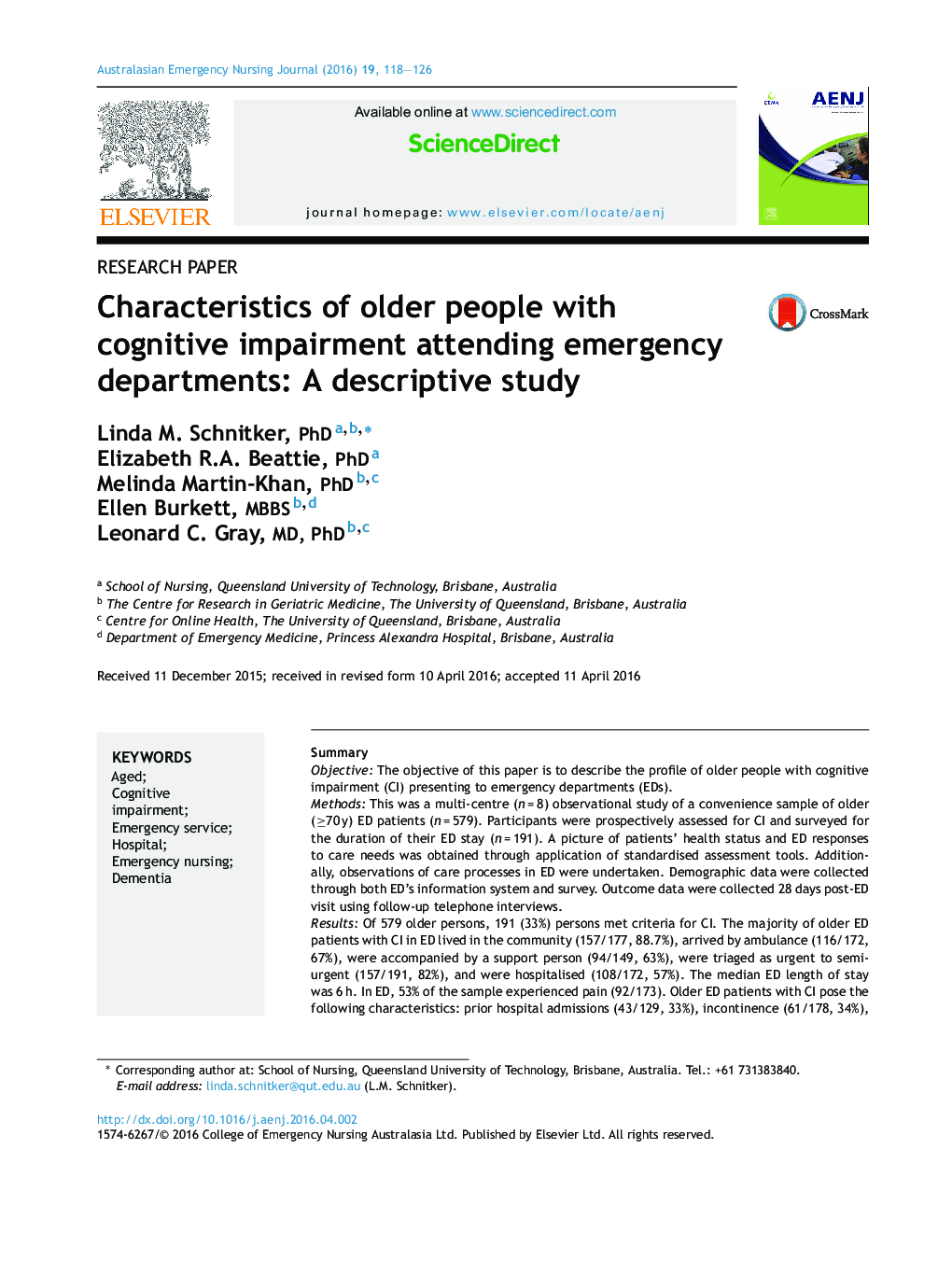| Article ID | Journal | Published Year | Pages | File Type |
|---|---|---|---|---|
| 5863185 | Australasian Emergency Nursing Journal | 2016 | 9 Pages |
SummaryObjectiveThe objective of this paper is to describe the profile of older people with cognitive impairment (CI) presenting to emergency departments (EDs).MethodsThis was a multi-centre (n = 8) observational study of a convenience sample of older (â¥70 y) ED patients (n = 579). Participants were prospectively assessed for CI and surveyed for the duration of their ED stay (n = 191). A picture of patients' health status and ED responses to care needs was obtained through application of standardised assessment tools. Additionally, observations of care processes in ED were undertaken. Demographic data were collected through both ED's information system and survey. Outcome data were collected 28 days post-ED visit using follow-up telephone interviews.ResultsOf 579 older persons, 191 (33%) persons met criteria for CI. The majority of older ED patients with CI in ED lived in the community (157/177, 88.7%), arrived by ambulance (116/172, 67%), were accompanied by a support person (94/149, 63%), were triaged as urgent to semi-urgent (157/191, 82%), and were hospitalised (108/172, 57%). The median ED length of stay was 6 h. In ED, 53% of the sample experienced pain (92/173). Older ED patients with CI pose the following characteristics: prior hospital admissions (43/129, 33%), incontinence (61/178, 34%), dependence in activities in daily living (81/190, 43%), issues in nutrition (73/182, 40%), vision and hearing impairment (93% (160/172) and 26% (44/171) respectively).ConclusionIncreased understanding of these presenting characteristics and their impacts on patient risk facilitates tailoring the quality of emergency care to better suit the needs and improve outcomes of this increasing ED population.
